Lower Water-Use Trees for Colorado Climates
- 2022-03-04
- By mkirk
- Posted in Horticulture, The Garden Buzz
By Martha Kirk, Colorado Master Gardener
Are you thinking of planting a tree this year? Perhaps you need a taller shade tree, or a smaller tree to fit the scale of your property or one that can be a focal point in the landscape. In your search, consider adding drought tolerance to the list of attributes. Recent research indicates the southwest is in a 22-year drought, the longest period on record dating back 1200 years. Researchers determined this by looking at tree ring data and correlating it to soil moisture. With this in mind, here are some lower water-use trees you might consider.
American Hophornbeam – Ostrya virginiana
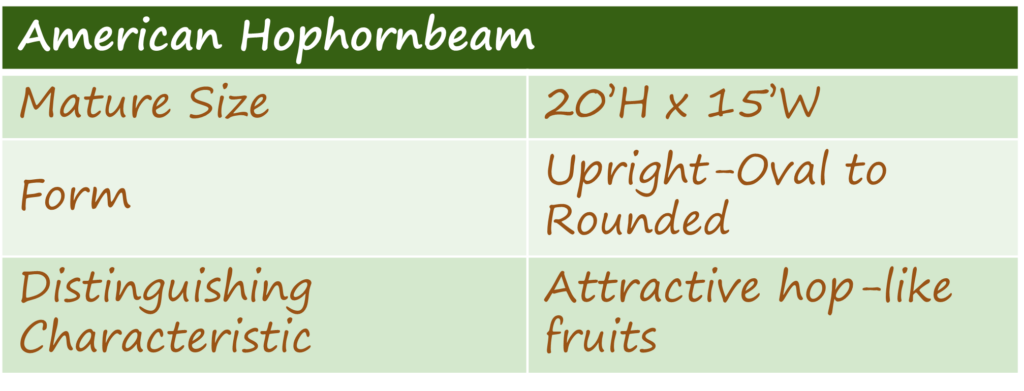
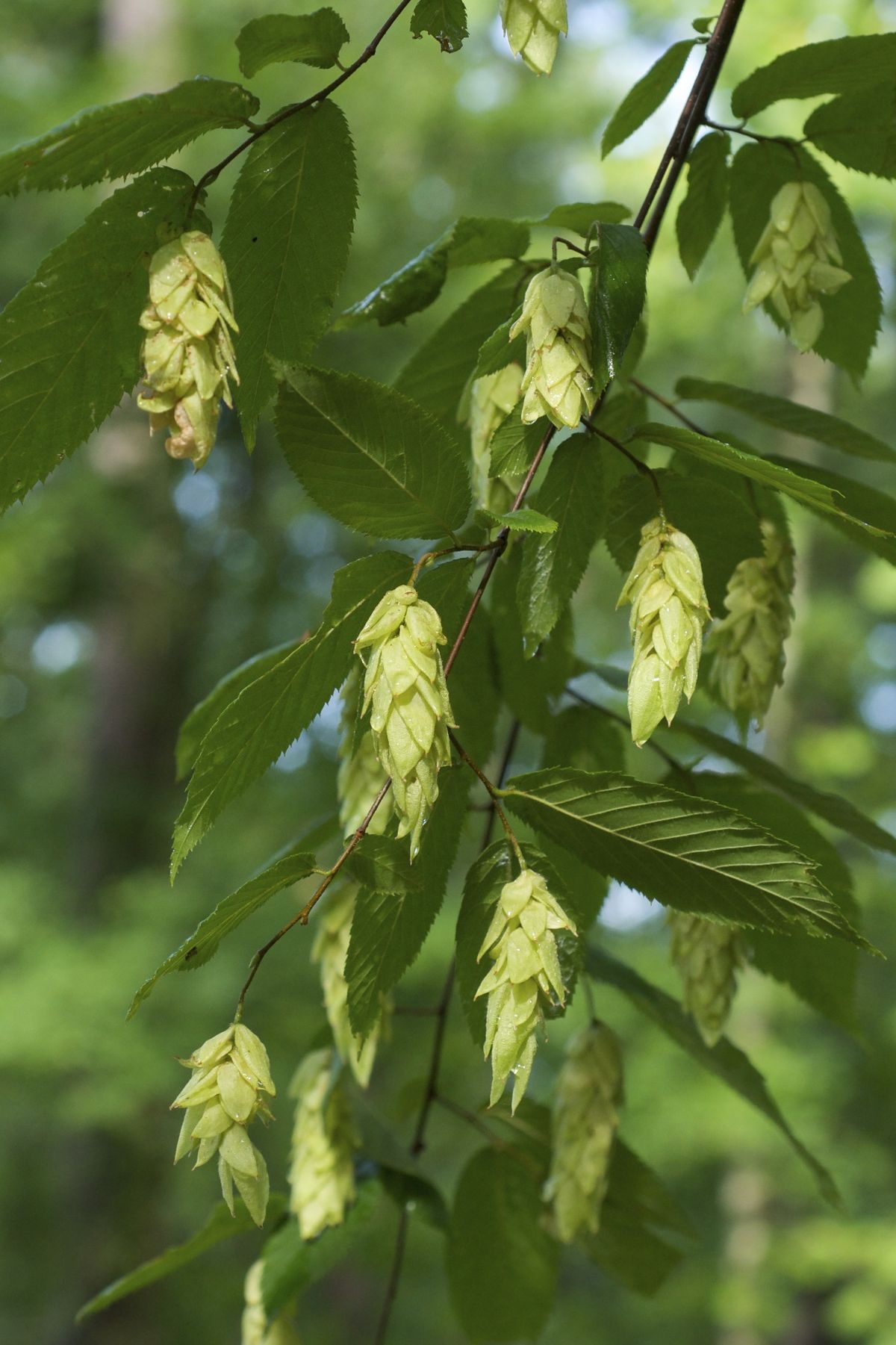
Commonly called Ironwood, this graceful small tree fits urban settings. It is an understory tree can be planted in part shade. American Hophornbeam tolerates alkaline soils and drought and has no serious disease or pest issues. It grows across the eastern United States as well as a few states west of the Mississippi, including Colorado.
Photo: wikipedia.org
Bigtooth Maple – Acer grandidentatum
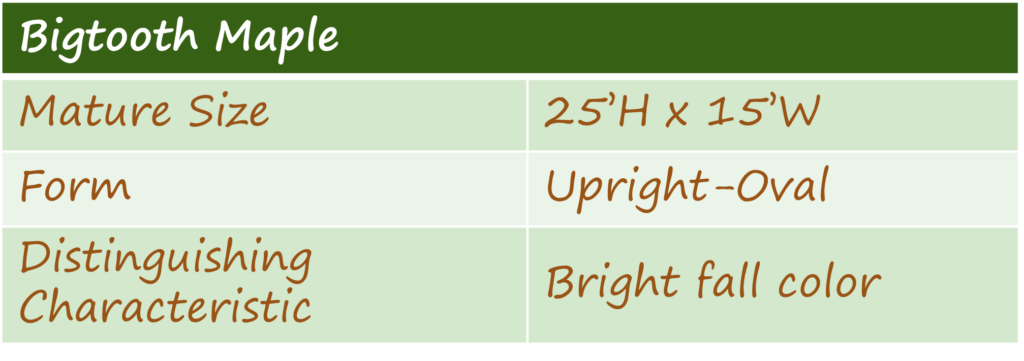

This small tree is native to the Western United States and is available as a multi-stem or single stem tree. Bigtooth Maple tolerates harsh weather and many soil types, has beautiful red/yellow fall color, and is relatively slow growing. It has no pest or disease issues. Named varieties include ‘Mesa Glow,’ ‘Highland Park,’ and ‘Rocky Mountain Glow.’
Photo: pinterest.com
Chinkapin Oak – Quercus muehlenbergii
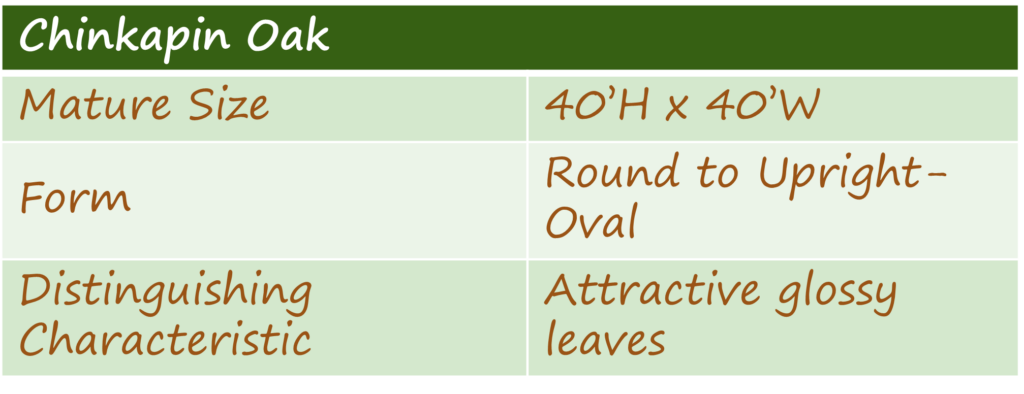

Chinkapin Oak is a large shade tree native to North America. This handsome and stately tree adapts well to alkaline soils and shows no signs of chlorosis, pests, or disease.
Photo: fjschmidt.com
Caddo Sugar Maple – Acer saccharum ssp. ‘Caddo’

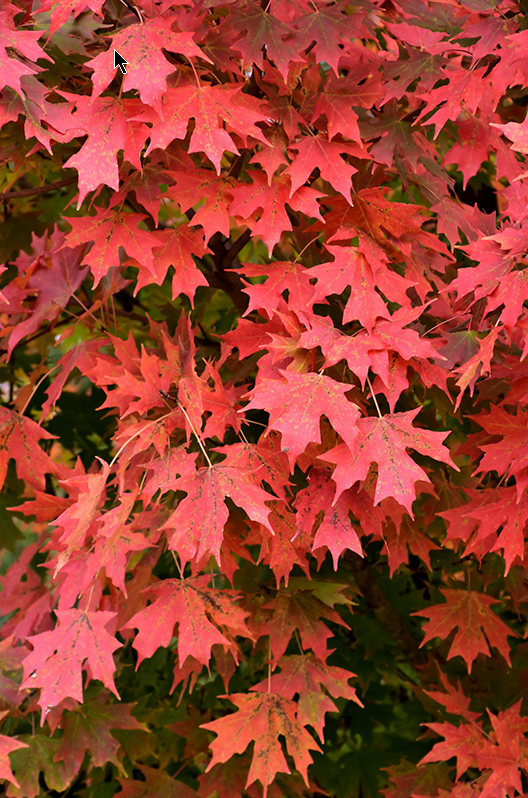
The Caddo Sugar Maple has an interesting history. It was found growing in isolated limestone canyons in Caddo County, OK and subsequently selected and propagated for the best fall color. It is a subspecies of the standard sugar maple but tolerates drought and alkaline soils with little if any chlorosis. Its leaves are leathery, so they don’t tear as much in the wind, and it is resistant to leaf scorch. Fall color ranges from red to orange to yellow. It adapts to part shade and requires low to medium water. Named varieties include ‘Flashfire,’ ‘John Pair,’ ‘Autumn Splendor.’
Photo: familytreenursery.com
Accolade® Elm –Ulmus ‘Morton’
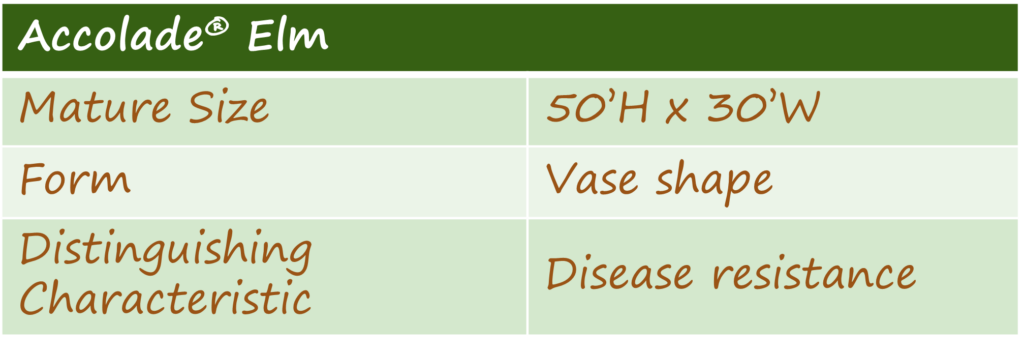

Accolade Elm is a large shade tree with a graceful vase habit and upright arching limbs and handsome glossy foliage. Most notably, it has good resistance to Dutch Elm Disease, elm leaf miner, and elm leaf beetle. It is a vigorous grower and adaptable to adverse growing conditions. It is a seedling selection from Morton Arboretum.
Photo: chicagoland.org
Tannenbaum Mugo Pine – Pinus mugo ‘Tannenbaum’

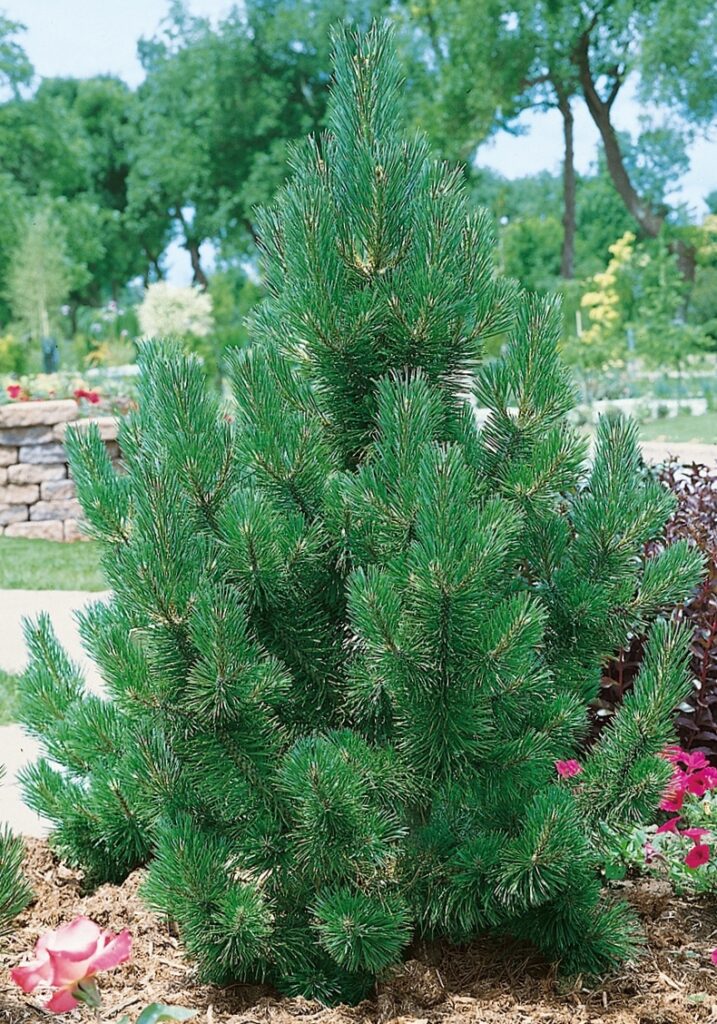
Tannenbaum Mugo Pine is not grafted, but is instead, a tree form of the mugo pine. It has the tough constitution of a mugo pine and the distinctive shape of a perfect Christmas tree, so it fits well into smaller landscapes. Needles are a rich green and hold their color in winter. It is very hardy and highly adaptable to a wide range of growing conditions. It is a slow grower and does best in full sun.
Photo: bowerandbranch.com
Trees are one of the bigger investments in the landscape, so plant selection, proper siting (right plant, right place) and correct planting are keys to making your investment last. CSU Extension has many resources and plant lists for more ideas.
One Response on “Lower Water-Use Trees for Colorado Climates”
Leave a Reply Cancel reply
Horticulture Resources
- Garden Buzz Archives
- CSU Extension Resources
- Colorado Master Gardener Program
- Foothills to Plains Native Plant Master Program
- Native Bee Watch Community Science Program
- The Co-Hort Blog
- PlantTalk Colorado
- Soil Testing
- Plant Select
- Emerald Ash Borer
- Japanese Beetle
- Colorado State Forest Service
- Ask an Expert



Thanks for sharing this valuable information.